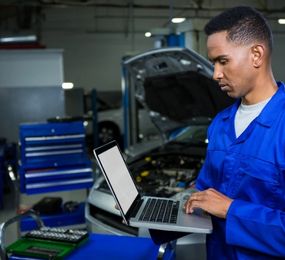In the age of advanced driver-assistance systems (ADAS) and autonomous vehicles (AVs), the concept of functional safety takes center stage. Functional safety is the engineering approach that minimizes the risk of malfunctions within a system, ensuring it operates as intended under various conditions. This becomes paramount in vehicles where critical systems like steering and braking rely heavily on electronics and software.
This article explores best practices for developing and implementing functional safety systems, fostering trust and reliability in complex automotive technology.
Building a Robust Foundation
-
Early Integration: Functional safety should be considered from the very beginning of the development process, not as an afterthought. This ensures a holistic approach that integrates safety measures throughout the design, development, and testing phases.
-
Risk Management: A cornerstone of functional safety is a comprehensive risk assessment. Identifying potential hazards, analyzing their severity and likelihood, and implementing appropriate mitigation strategies is crucial. Techniques like Failure Mode and Effects Analysis (FMEA) are valuable tools in this process.
-
Standards Compliance: Adhering to relevant functional safety standards, like ISO 26262, provides a structured framework for development. These standards outline requirements for risk management, development processes, verification and validation, and documentation.
Crafting a Safe System
-
Safety-Oriented Design: Design choices should prioritize safety. Utilizing redundant components, fail-safe mechanisms, and self-diagnostics can significantly enhance system reliability.
-
Verification and Validation: Verifying that the system meets its design specifications and validating its effectiveness in real-world scenarios are essential steps. This involves a combination of testing techniques, including code reviews, simulations, and hardware-in-the-loop testing.
-
Traceability: Maintaining a clear and documented trail throughout the development process is crucial. This allows for efficient troubleshooting, incident investigation, and continuous improvement.
Beyond Development
-
Supplier Management: Selecting and collaborating with suppliers who share a commitment to functional safety is vital. Clear communication of safety requirements and expectations throughout the supply chain is essential.
-
Continuous Improvement: Functional safety is not a one-time activity. Regularly reviewing and updating safety measures as technologies and environments evolve is crucial.
Building a Culture of Safety
-
Training and Awareness: Ensuring all personnel involved in the development and operation of vehicles understand functional safety principles is critical. Regular training programs can foster a culture that prioritizes safety at all levels.
-
Open Communication: Encouraging open communication about potential safety concerns and fostering a blame-free environment is essential for identifying and addressing issues proactively.
The Road to Safe Mobility
By implementing these best practices, developers and manufacturers can build robust functional safety systems, fostering trust and confidence in the reliability of autonomous and advanced driver-assistance technologies. This paves the way for a future of safe and sustainable mobility for all.
Register today to secure your spot, please check here: https://bit.ly/3zH7AKk
For more information and group participation, contact us: [email protected]
















